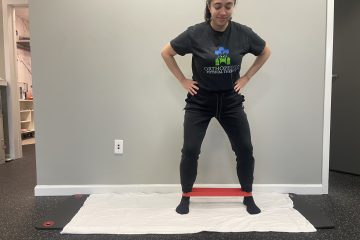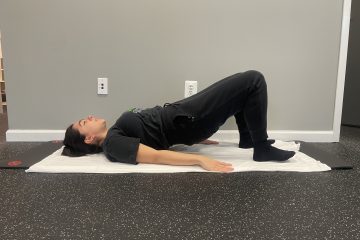What is a DRA?
DRA stands for Diastasis Rectus Abdominis, or Diastasis Recti. If you feel funky with the pronunciation, just say DRA. Everyone likes a shorthand anyway.
DRA is a separation of the abdominal muscles at the linea alba. A true DRA is one with a greater than 2 finger-width separation, but any abdominal separation that is impeding function and/or causing pain should be addressed through pelvic health physical therapy.

Symptoms of a DRA:
- Bulging, coning, and/or doming in the abdomen
- Pain or difficulty lifting objects or sitting up
- Low back pain/pelvic pain/hip pain
- Leakage (stress incontinence, urge incontinence, or mixed)
- Abdominal pain and/or pressure
- Bloating and constipation
What causes a DRA?
The most common cause is pregnancy, and in fact, every pregnant person will have a DRA by 35 weeks. The rectus abdominis (6-pack muscles) have to separate in order to accommodate a growing baby. If you notice symptoms such as coning or doming during pregnancy, those are signs of pressure loss due to the DRA, and can make the DRA worse. Therefore, it is important t0 learn how to move and exercise without the pressure loss pulling those abs even farther apart.
At OrthoPelvic, in addition to teaching how to avoid pressure loss during exercise, we also teach all of our prenatal patients how to do their daily tasks of lifting things, carrying kids, rolling over in bed etc. in ways that protect the abdominals.
We tend to be more aware of a DRA postpartum, and you may have seen the self-assessment articles online asking you to check how many finger widths your gap is. The truth is, the width isn’t what’s important. Some people will have a gap after baby, and some won’t. Some gaps will close, and some won’t. It’s like so many of the body-changes with pregnancy and postpartum, we all exist on a spectrum of stretch marks and loose skin, and abdominal separations. The biggest difference with the latter is that if not addressed, the pressure loss that often results from abdominal separation can cause a host of other issues and can impede your daily function.
Something we often notice with patients who come in with abdominal separations is that they have often avoided abdominal exercises since pregnancy because they are so scared to make their abs worse. We completely understand this! It is scary and that’s why we’re here. We are the professionals who can guide you through. We will assess width and depth of a separation, but the most important thing we assess for is what happens when the core is engaged. That is the starting point for our plan of care.
 So what exactly do we do in pelvic floor physical therapy to address DRA? Glad you asked!
So what exactly do we do in pelvic floor physical therapy to address DRA? Glad you asked!
Treatment:
- Teach pressure-management strategies to prevent coning, doming or bulging, which remember, are signs of pressure loss.
- This is important to keep the separation from getting worse.
- Examine functional movements and teach breathing/bracing strategies to engage the core properly.
- Postural training to make sure pressure is not being put on the abdominals in everyday positions.
- Strengthen the deep core of the abdominals. The transverse abdominis muscles surround the mid-trunk like a corset, and they are far functionally stronger and more useful than our 6-pack muscles. We get these strong, we don’t have to worry about the pressure loss with the 6-pack muscles.
- During strengthening, gradually load the abdominal tissue so that any pain and dysfunction decreases.
- Glute work to help optimize and support core function.
- If there are other pelvic health issues such as constipation, identify and address those as well through manual work, muscle strengthening, and potentially supplement/diet recommendations.
Long list, isn’t it?
As is true with all pelvic health issues, they are complex and multifaceted, and they require a comprehensive, skilled, and personalized approach.
That’s part of why we love this work so much…the complexity and interconnectedness of pelvic health, the demand to detail it requires, the differences among patient postures and lifestyles and goals; everyday is a magical blend of difference and sameness.
If you are dealing with an abdominal separation or another nagging pain or injury that needs support to return to optimal function, book a FREE 10-minute consult call today. We know we can help you ✨
Be empowered in education,
OrthoPelvic Physical Therapy


